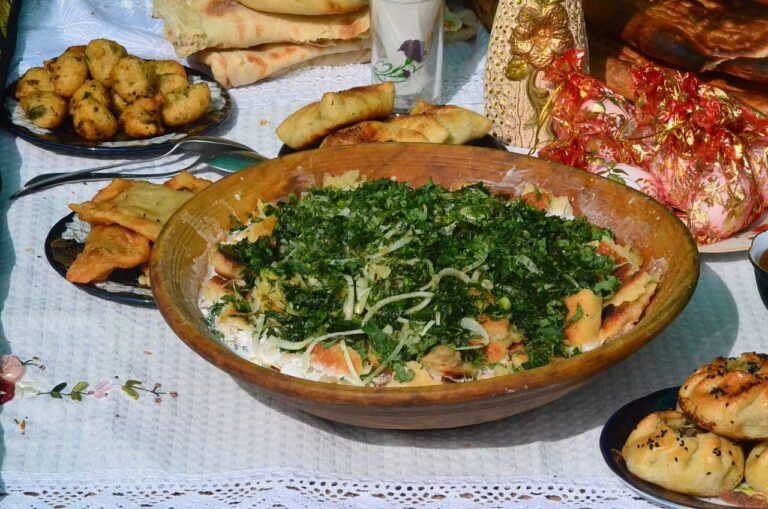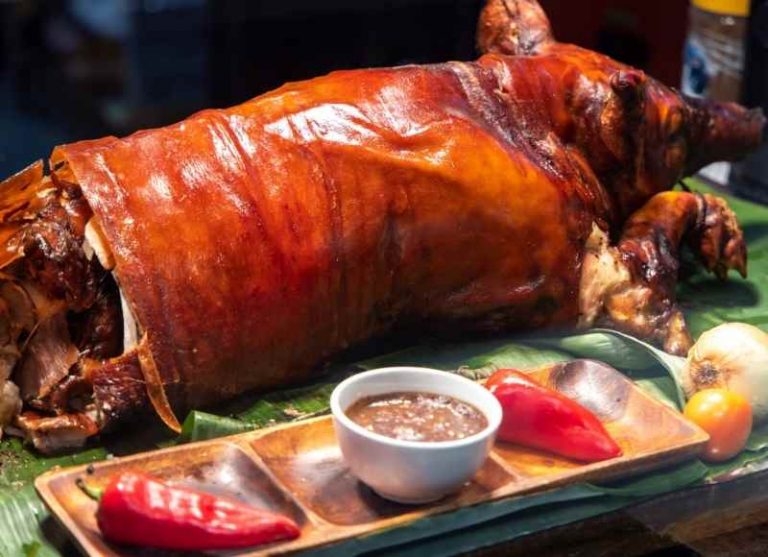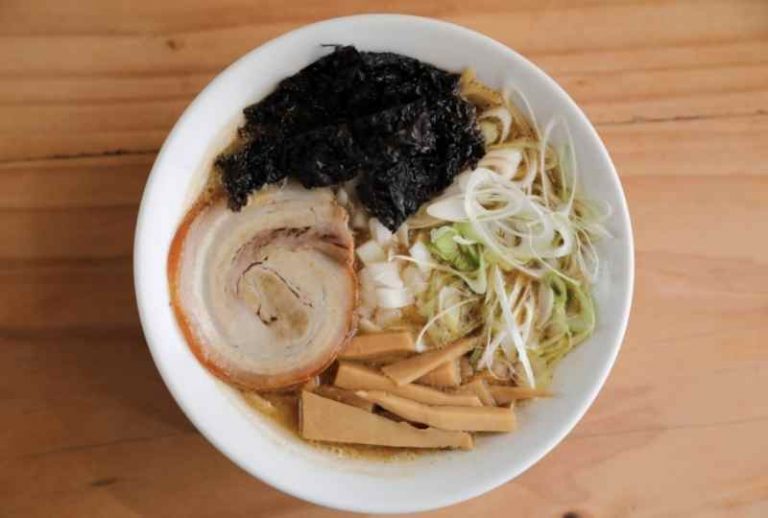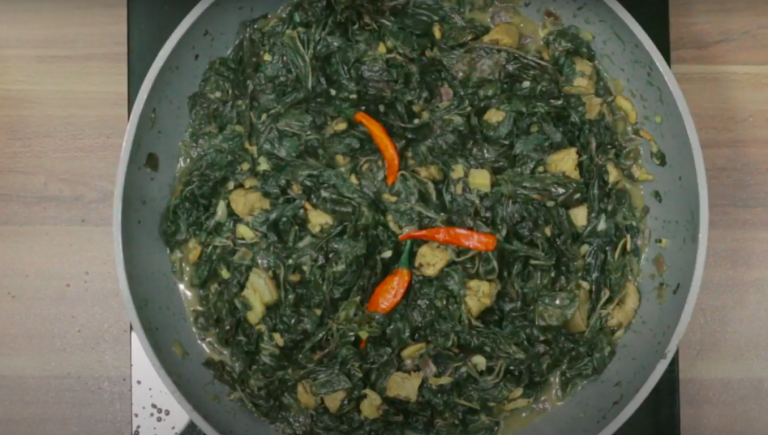Authentic Uzbek Plov Recipe
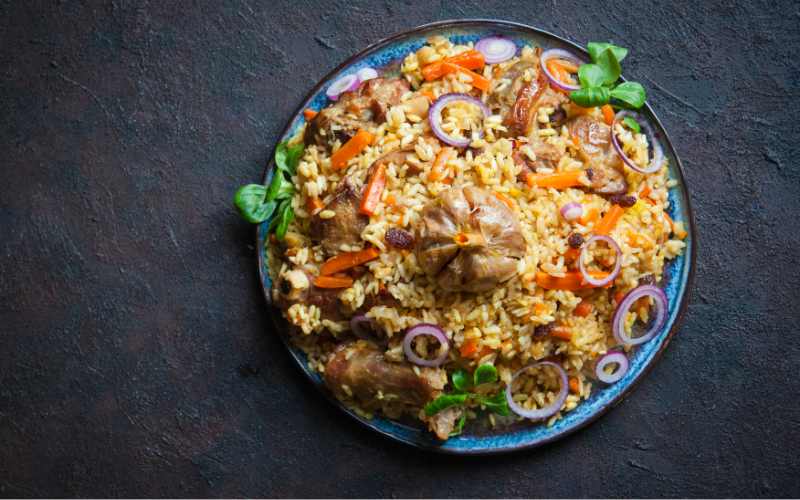
Persians and people from the west call it pilaf. In the Hindu language, they call it pulav, whereas in Urdu it is referred to as pulao.
It is a recipe that has passed through boundaries and has made a name and version for itself in every country. However, there’s no country where the dish is as socially and traditionally important as it is in Uzbekistan.
Uzbek Plov is renowned worldwide and is possibly one of the country’s most famous assets.
It’s not that simple to find a country where people are so proud of their national dish. Granted, each specific dish holds great importance at every event and it would certainly feel odd if it were not added.
However, as we’ve been advised by a couple of overlanders, in the heart of Central Asia, namely in Uzbekistan, consuming plov is pretty much a religion.
Where Did Plov Come From?
Plov is a recipe that consists of rice, meat, onion, and carrots mostly, and it seems like it has been with us ever since forever. Plov originates from the 10th or 11th century of the Uzbek and even world history, being both a holiday dish and a dish with healing properties.
Some records say that Alexander the Great had eaten plov after his conquering of Samarcanda city now referred to as Marakanda. Legend also says (although there is no actual proof of that), that Alexander the Great himself was the one to actually invent this dish and serve it to his soldiers.
Its purpose for serving it was actually fairly practical: he was thirsty for victory but did not want his soldiers to waste time with three meals per day. That is why he came up with a nutritious dish that could be consumed as breakfast, lunch, and dinner. The recipe stuck until after the war as well.
Since plov was a fairly expensive dish to make, not everyone could afford it, except for the rich. For this reason, people would only consume it on holidays or when a great feast was announced.
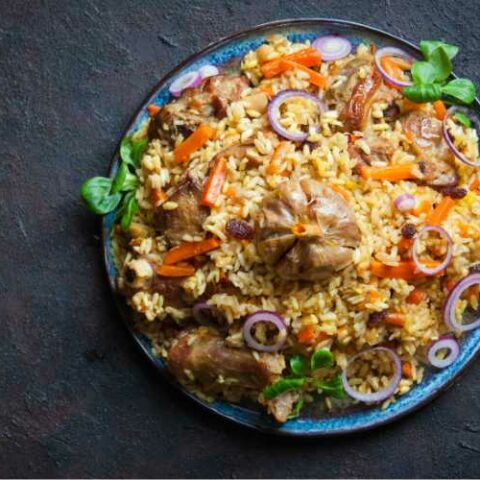
Authentic Uzbek Plov Recipe
Plov is found in different variations all over the world and even the people in Uzbekistan have over 60 different versions of it. Wedding plov, holiday plov, funeral plov, army plov, all kinds of plov set for several occasions.
However, there is still one traditional go-to version that people prefer to make at all times, the authentic Plov recipe that you will find detailed below.
Ingredients
- 1/2 cup Vegetable oil
- 2 Large onions sliced
- 1 1/2 lb Lamb meat chopped into chunks
- 1 lb Long grain rice
- 1 lb Carrots chopped into medium sticks
- 1 head Garlic
- 1 tbsp Cumin powder (or seeds)
- 1 tsp Coriander powder
- Salt and pepper to taste
Instructions
- Cook the rice according to packet instructions.
- Meanwhile, in a large pan, fry the onions in the vegetable oil.
- After stirring occasionally for a few minutes, add the lamb, cook it for 10 more minutes, and add the carrots. After stirring occasionally for a few minutes, add the lamb, cook it for 10 more minutes, and add the carrots.
- Add the spices, along with 4 cups of water. Add the spices, along with 4 cups of water.
- After the rice has been washed, spread it evenly throughout the pot. Cover the pot and leave it to cook for about 30 minutes or until the water gets fully absorbed.
- Serve it as soon as the dish begins to cool down. serve it as soon as the dish begins to cool down.
Nutrition Information:
Yield: 4 Serving Size: 1Amount Per Serving: Calories: 975Total Fat: 64gSaturated Fat: 17gTrans Fat: 1gUnsaturated Fat: 42gCholesterol: 165mgSodium: 269mgCarbohydrates: 51gFiber: 5gSugar: 7gProtein: 47g
Plov is a dish that celebrates life and death alike, a dish that brings strength and healing to people that gather around it. No matter if it is eaten at a wedding, a funeral or at your average lunch break; plov is a very nutritious and tasty dish. You just need to know how to prepare it.
Watch: Cooking Uzbek Plov Video
There are hundreds of variations on Plov, not to mention those eaten in South Asian countries such as Bangladesh or European countries. The recipe in this post is the most authentic and you can find a similar version in the video below if you wish to see the cooking process in action.

